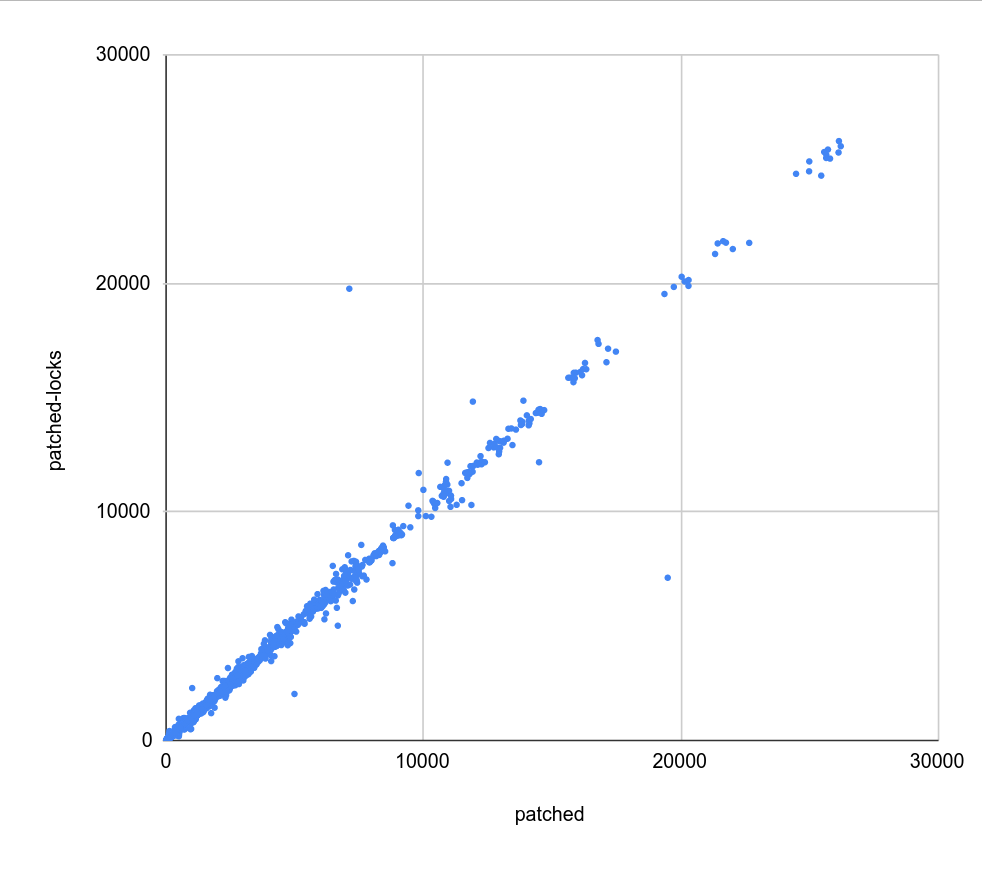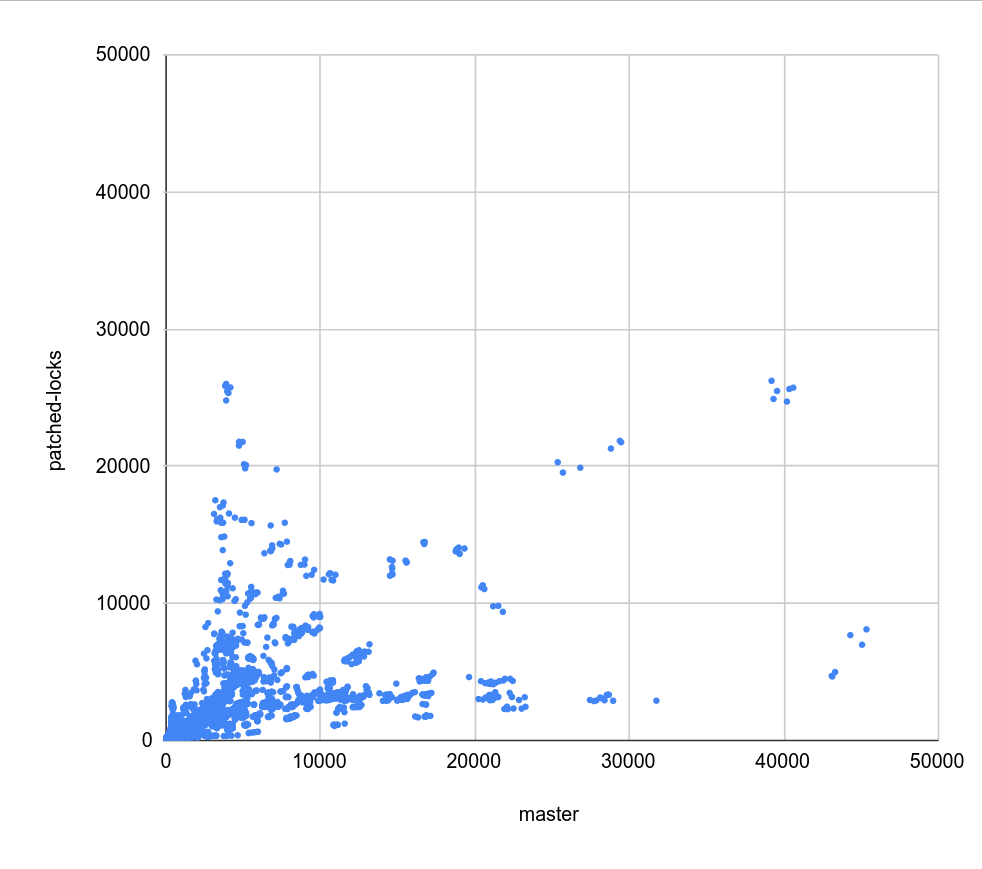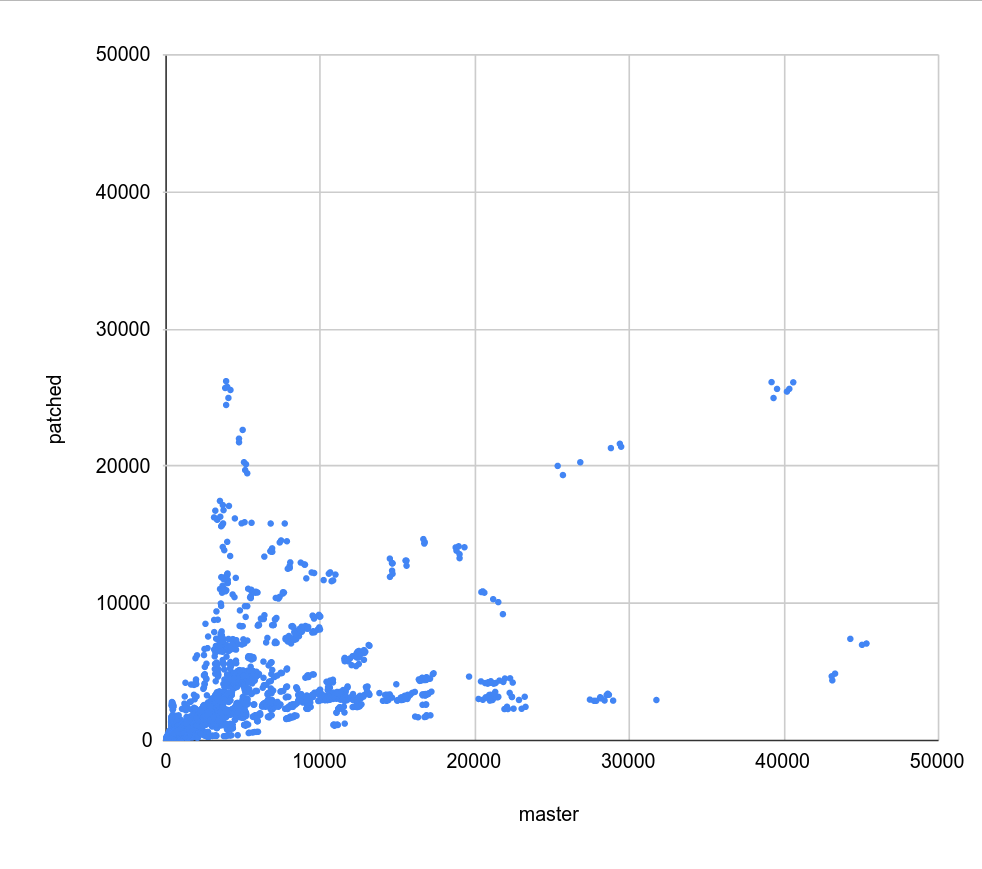Re: BitmapHeapScan streaming read user and prelim refactoring
| От | Tomas Vondra |
|---|---|
| Тема | Re: BitmapHeapScan streaming read user and prelim refactoring |
| Дата | |
| Msg-id | 86ddff18-175b-4ae7-a039-129eaf4abe8f@enterprisedb.com обсуждение исходный текст |
| Ответ на | Re: BitmapHeapScan streaming read user and prelim refactoring (Melanie Plageman <melanieplageman@gmail.com>) |
| Список | pgsql-hackers |
On 3/3/24 00:39, Melanie Plageman wrote: > On Sat, Mar 2, 2024 at 5:51 PM Tomas Vondra > <tomas.vondra@enterprisedb.com> wrote: >> >> On 3/2/24 23:11, Melanie Plageman wrote: >>> On Fri, Mar 1, 2024 at 2:31 PM Melanie Plageman >>> <melanieplageman@gmail.com> wrote: >>>> >>>> ... >>>> >>>> Hold the phone on this one. I realized why I moved >>>> BitmapAdjustPrefetchIterator after table_scan_bitmap_next_block() in >>>> the first place -- master calls BitmapAdjustPrefetchIterator after the >>>> tbm_iterate() for the current block -- otherwise with eic = 1, it >>>> considers the prefetch iterator behind the current block iterator. I'm >>>> going to go through and figure out what order this must be done in and >>>> fix it. >>> >>> So, I investigated this further, and, as far as I can tell, for >>> parallel bitmapheapscan the timing around when workers decrement >>> prefetch_pages causes the performance differences with patch 0010 >>> applied. It makes very little sense to me, but some of the queries I >>> borrowed from your regression examples are up to 30% slower when this >>> code from BitmapAdjustPrefetchIterator() is after >>> table_scan_bitmap_next_block() instead of before it. >>> >>> SpinLockAcquire(&pstate->mutex); >>> if (pstate->prefetch_pages > 0) >>> pstate->prefetch_pages--; >>> SpinLockRelease(&pstate->mutex); >>> >>> I did some stracing and did see much more time spent in futex/wait >>> with this code after the call to table_scan_bitmap_next_block() vs >>> before it. (table_scan_bitmap_next_block()) calls ReadBuffer()). >>> >>> In my branch, I've now moved only the parallel prefetch_pages-- code >>> to before table_scan_bitmap_next_block(). >>> https://github.com/melanieplageman/postgres/tree/bhs_pgsr >>> I'd be interested to know if you see the regressions go away with 0010 >>> applied (commit message "Make table_scan_bitmap_next_block() async >>> friendly" and sha bfdcbfee7be8e2c461). >>> >> >> I'll give this a try once the runs with MAX_BUFFERS_PER_TRANSFER=1 >> complete. But it seems really bizarre that simply moving this code a >> little bit would cause such a regression ... > > Yes, it is bizarre. It also might not be a reproducible performance > difference on the cases besides the one I was testing (cyclic dataset, > uncached, eic=8, matches 16+, distinct=100, rows=100000000, 4 parallel > workers). But even if it only affects that one case, it still had a > major, reproducible performance impact to move those 5 lines before > and after table_scan_bitmap_next_block(). > > The same number of reads and fadvises are being issued overall. > However, I did notice that the pread calls are skewed when the those > lines of code are after table_scan_bitmap_next_block() -- fewer of > the workers are doing more of the reads. Perhaps this explains what is > taking longer. Why those workers would end up doing more of the reads, > I don't quite know. > > - Melanie I do have some numbers with e44505ce179e442bd50664c85a31a1805e13514a, and I don't see any such effect - it performs pretty much exactly like the v6 patches. I used a slightly different visualization, plotting the timings on a scatter plot, so values on diagonal mean "same performance" while values above/below mean speedup/slowdown. This is a bit more compact than the tables with color scales, and it makes it harder (impossible) to see patterns (e.g. changes depending on eic). But for evaluating if there's a shift overall it still works, and it also shows clusters. So more a complementary & simpler visualization. There are three charts 1) master-patched.png - master vs. v6 patches 2) master-locks.png - master vs. e44505ce 3) patched-locks.png - v6 patches vs. e44505ce There's virtually no difference between (1) and (2) - same pattern of regressions and speedups, almost as a copy. That's confirmed by (3) where pretty much all values are exactly on the diagonal, with only a couple outliers. I'm not sure why you see a 30% difference with the change. I wonder if that might be due to some issue in the environment? Are you running in a VM, or something like that? regards -- Tomas Vondra EnterpriseDB: http://www.enterprisedb.com The Enterprise PostgreSQL Company
Вложения
В списке pgsql-hackers по дате отправления:


